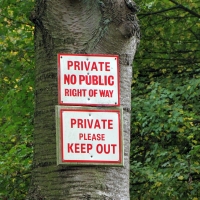Two Options for Public Cloud and Private Connectivity

Are you holding back using cloud services because you are concerned with the reliability, security, and performance of the Internet? While many companies have been flocking to public cloud services because they offer the flexibility and cost effectiveness needed in today’s volatile business climate, enterprise cloud adoption has been slowed by the lack of end to end SLAs and unreliable network service delivery over the Internet. To address this gap, Amazon and Microsoft are offering opportunities to establish connections to their public cloud services over private networks.
In response to increasing customer pressure, Amazon rolled out the Direct Connect program in August 2011. It allows customers to choose port speeds ranging from 50M all the way up to a dedicated 1GB or 10GB connection to their cloud environment. The larger connections can be further partitioned into multiple virtual interfaces, which provide the flexibility to access public resources like S3 object and EC2 instances within the Virtual Private Cloud (VPC) using private IP space.
Currently thirty-nine partners have signed up to be in the program. With the exception of Level 3, most of the partners are in only a few of the eleven pre-provisioned data centers, but the locations will allow customers to establish presence in key places worldwide for faster content delivery and reduced latency.
As a customer, connecting to Amazon Direct Connect is a relatively simple process. Log into the customer account AWS Management Console, and then make a request for connectivity to a Direct Connect partner in any or all of the data centers. Once the request has been made, it is sent to the partner so the connectivity can be established. Amazon is a bit vague about how long the connection will take to be provisioned.
The connection costs depend on the bandwidth desired. Amazon charges on a combination of connectivity, data transfer, and region. Don’t forget that the partner’s circuit and port charges are in addition to any Amazon charges.
The newest option is Microsoft Azure ExpressRoute. First announced in February 2014 with partners Level 3, AT&T, and Equinix, it is currently available in two locations in the US. Unlike Amazon’s Direct Connect, ExpressRoute not only allows users to make requests for private connections, but it also has hooks in the Virtual Network service that make configuring connections to private local networks through ExpressRoute circuits a snap—if you are an expert Layer 3 network engineer of course.
Who would benefit from these new connectivity options? Any company that wants to access public cloud services through a private connection will be able to use the services to their advantage. Data and application migrations between internal and public cloud infrastructures will also benefit from using private circuits instead of the Internet.
Be aware that just because the network connection is there, it does not mean that the application itself will be cloud ready. Other use cases include the ability to build public and private hybrid cloud infrastructures, faster and more reliable backup, and high availability options.

